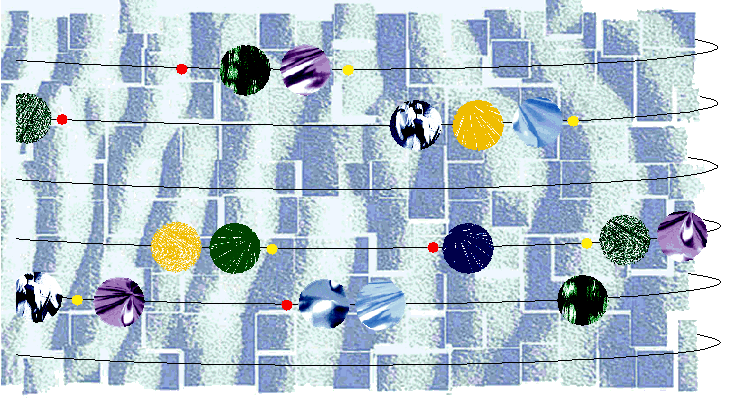 Jane C. Blake
Jane C. Blake
Managing Editor
Three computing topics are presented in this issue of the journal: a storage array controller for open system environments, workflow architectures and tools, and PC and LAN system management products.
The opening paper, by Steve Sicola, describes Digital's new HS series of StorageWorks array controllers. Designed for open systems, the controllers interface to host computers by means of the industry-standard SCSI-2 interconnect, as well as Digital's CI and DSSI host interconnects. Equally important to designers as openness were controller availability and performance. Innovative features were introduced, including dual-redundant controllers and Parity RAID firmware to ensure high availability, and a write-back cache that significantly improves performance. The paper concludes with a description of the common controller processing core for the SCSI, CI, and DSSI controller variants.
Workflow is the subject of two papers with differing perspectives. Christoph Bubler opens his paper with introductory definitions and implications of workflow concepts. He argues that a workflow that uses roles for task assignment is limited, especially in large, international enterprises. He states that by adding the dimension of organizational dependencies for task assignment a complex workflow is more precisely expressed. Using the example of a travel expense reimbursement workflow, Christoph shows how the Policy Resolution Architecture design principles support enterprise level workflow deployment-reusability, security, generality, dynamics, and distribution. He also discusses the Policy Definition Language that formally
describes workflow elements.
A second paper about workflow presents a tool, called DECmodel for Windows, for the development of business process models and their graphical presentation. Stew Hoover and Crary Kratkiewicz
explain the reason behind the creation of a presentation layer in DECmodel that provides a graphical view of the business process while hiding the technical details of the model. The authors also cover implementing details, including the reason to move from the original LISP environment to a C++ programming environment and to implement the knowledge base for DECmodel in ROCK, a frame-based knowledge representation.
We then shift the focus to ManageWORKS and POLYCENTER tools that have been developed to simplify the increasingly complicated job of system management. The first of three papers describes the development of the ManageWORKS Workgroup Administrator software. Dennis Giokas and .John Rokicki discuss the design principles adopted for this product that enables system and network management of heterogeneous LANs from a single PC running Microsoft Windows. Key design elements are plug-in. customizable modules for system navigation and management, and the user interface framework, which controls the flow between modules. The authors offer scenarios to illustrate interactions between components.
Managing OpenVMS systems from a PC running the Microsoft Windows operating system can be accomplished with the OpenVMS Management Station. of which ManageWORKS is a key component. Jim Johnson defines the need for this scalable and secure client-server tool in OpenVMS environments. which can be clustered, distributed, expanded. and networked extensively. After a discussion of design alternatives, Jim describes the functions of the Station's client, communication, and server components.
The final paper is about an initial system load (ISL) capability for automatic, network-directed, operating system software upgrades. John Lawson reviews goals for the POLYCENTER Software Distribution layered product, compares the POLYCENTER ISL process with the OpenVMS ISL process, and steps through the requirements for expanding the POLYCENTER Software Distribution capability to other platforms and operating systems.
>p?
Our next issue will celebrate the journal's tenth anniversary of publishing the technical achievements of Digital's engineers and partners. The issue will feature database technologies and new Alpha workstations and high-end server systems.
|